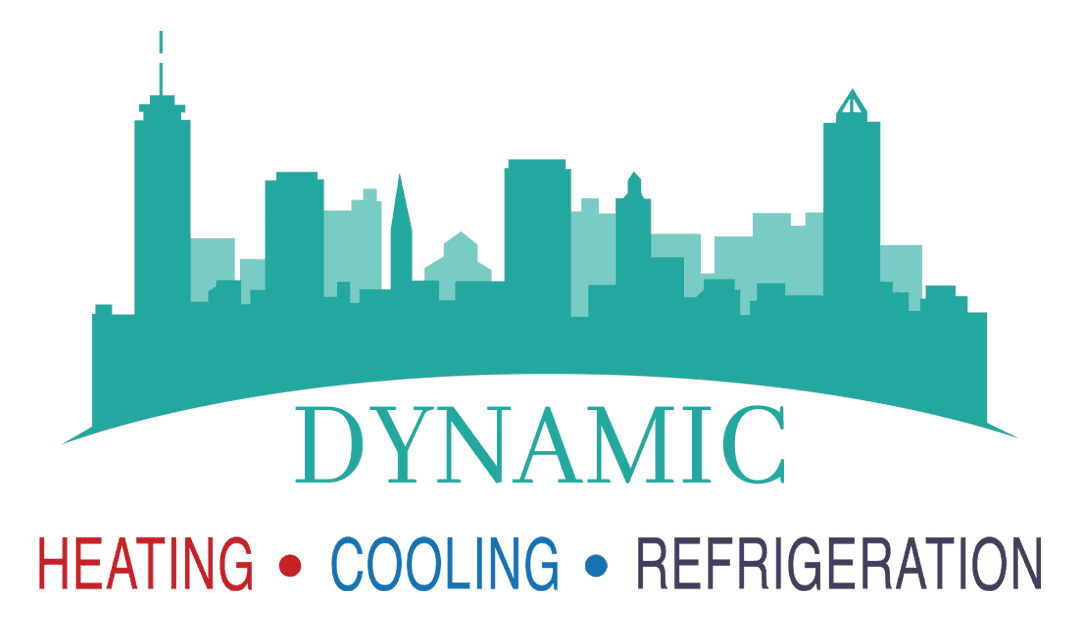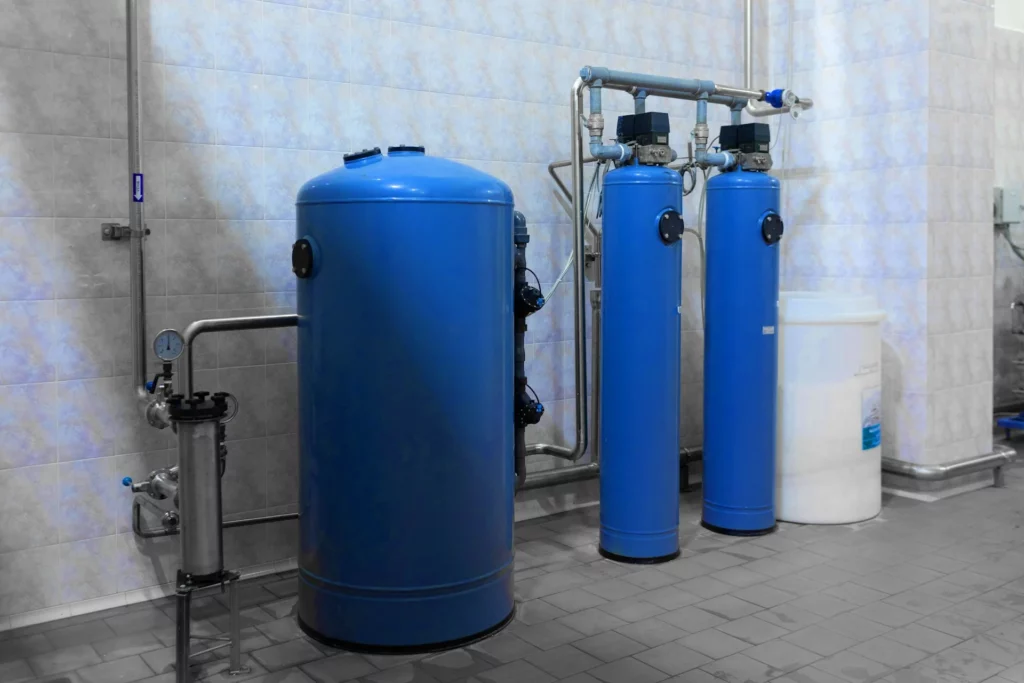Maintaining a house requires constant vigilance over many components, particularly your HVAC system, which serves as the backbone of your home’s comfort. Regular TLC through annual maintenance is essential for ensuring that your heating, cooling, and water heating systems operate smoothly.
Despite diligent care, issues such as a hot water tank leaking from bottom can still emerge. This problem, while alarming, is more common than you might think and is often quite fixable.
Whether you’re dealing with a hot water tank dripping, a full-scale water heater tank leaking, or just suspect your water heater is leaking from the relief valve, it’s important to handle these issues promptly.
This blog will explore the various reasons behind why your hot water heater leaking from bottom occurs and provide you with practical steps on how to address and resolve these hot leaks effectively.
Learn more about HVAC maintenance in our blog to keep your home warm and leakage-free.

Reasons Behind Your Hot Water Tank Leaking From the Bottom
The frustration of discovering your hot water tank leaking from bottom can be overwhelming. Recognizing the primary causes can help you determine the right course of action quickly. Here are four common reasons for these leaks, and how they each can impact the functionality and safety of your water heater:
1. Hot Water Tank Leaking From Bottom Due to Faulty Drain Valve
One prevalent reason for a hot water tank leaking from bottom is a faulty drain valve. These valves are crucial for periodic maintenance and draining the tank to remove sediment.
Over time, however, drain valves can wear out or become loose, leading to a hot water tank dripping scenario. This issue can often be identified by a consistent but minor leak from the valve itself. Regular inspections can prevent such issues or at least catch them before they turn into bigger problems.
What Can You Do About This?
If you suspect the drain valve is the problem, it’s often a simple fix. First, check if the valve is fully closed; sometimes it might not be properly shut. If the leak persists, the valve may need to be replaced. Consider contacting a professional from Dynamic Heating and Cooling in Hamilton & the Greater Toronto Area to ensure a proper replacement is done without risking further damage to your water heater.
2. Hot Water Tank Leaking From Bottom Due to Corrosion Within the Tank
Corrosion inside the tank is another major cause of a water heater tank leaking. This type of damage is insidious and can lead to significant water damage if not addressed.
The primary contributor to this issue is sediment buildup inside the tank, which interacts chemically with the tank material over time, leading to corrosion. Regularly flushing your tank annually is crucial to prevent this sediment buildup, helping extend the lifespan of your tank and preventing leaks. Installing a whole house water filter can provide additional help in combating corrosion.
What Can You Do About This?
To combat corrosion, schedule regular tank flushing and maintenance checks with an HVAC expert team. During these checks, a technician can assess the anode rod, which also helps protect the tank from corrosion. If the rod is depleted, replacing it can further prevent corrosive damage.
3. Hot Water Tank Leaking From Bottom Due to Faulty Temperature & Pressure (T&P) Relief Valve
A hot water tank relief valve leaking is a serious issue, as the T&P valve is a safety feature designed to prevent the tank from building up excessive pressure, which could cause the tank to burst. If this valve starts leaking, it could be a sign that it is either malfunctioning or that it’s responding to too much pressure or heat within the tank.
If the leak is due to excessive pressure, other aspects of your system may need adjustment, such as the thermostat or the heating element. Checking and replacing a faulty T&P valve promptly is crucial.
What Can You Do About This?
Regularly check the T&P valve by lifting the test lever and watching for a proper flow of water into the drain. If the flow is minimal or the valve doesn’t close properly, it’s time for a replacement. Given the critical nature of this part, consider hiring an HVAC professional from Dynamic Heating and Cooling to handle the replacement and ensure your system’s safety and efficiency.
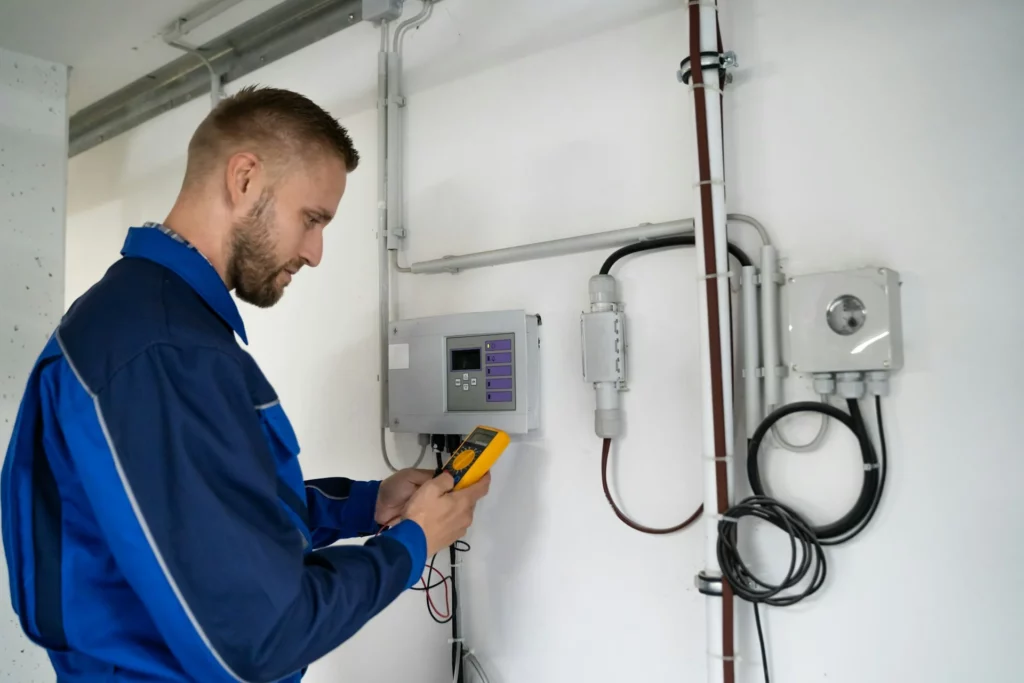
4. Hot Water Tank Leaking From Bottom Due to Loose Inlet or Outlet Connections
Finally, water leaking from top of hot water tank can often be traced back to loose inlet or outlet water connections. These connections can become loose over time due to thermal expansion and contraction, or they may not have been tightened sufficiently during installation.
If these connections are leaking, they can often be seen dripping directly above the heater, where the pipes meet the tank. Tightening these connections or replacing worn-out washers can usually resolve such leaks.
What Can You Do About This?
Examine the connections at the top of your hot water tank. You can often tighten these connections yourself with a wrench. However, if you’re not comfortable doing this or if the leak continues despite your efforts, it’s advisable to call in the experts. Dynamic Heating and Cooling’s technicians can ensure that all connections are secure and leak-free, preventing any future issues.
Preventative Measures and Maintenance
To mitigate issues such as hot water tank leaking from bottom, water leaking from top of hot water tank, or a general hot water tank leaking water scenario, regular maintenance is essential. This not only extends the lifespan of your HVAC system but also ensures it runs efficiently. Here are some crucial steps:
Check the Anode Rod
The anode rod is critical in preventing corrosion inside your hot water tank. It sacrifices itself to corrosion so that the tank itself doesn’t corrode. Therefore, checking and replacing the anode rod every few years can prevent a scenario where you find your hot water tank leaking from bottom due to rust and corrosion.
Inspect the Pressure Relief Valve
The pressure relief valve is a safety device that prevents excessive pressure buildup in your hot water tank, which if left unchecked, could lead to a hot water tank relief valve leaking. Regularly testing this valve by lifting its handle and making sure water exits freely can help catch issues before they turn into major problems.
Verify Thermostat Settings
Ensuring that the thermostat on your hot water heater is set to the correct temperature (typically around 120-130 degrees Fahrenheit) can prevent overheating and reduce the risk of hot water leaking. Incorrect settings can lead to excessive heating, increasing pressure within the tank that could result in hot water heater leaking from bottom.
Addressing Giant Hot Water Tank Problems
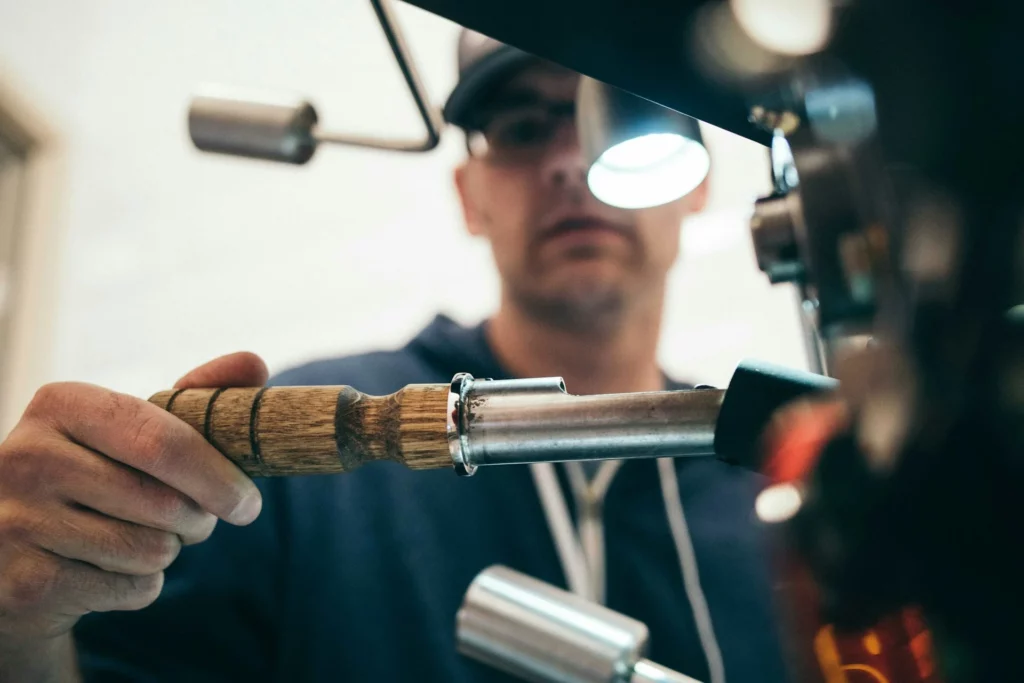
Larger hot water tanks, such as those used in commercial settings or large residences, face unique challenges due to their size. These include increased pressure on valves and joints, which can exacerbate wear and tear.
For giant hot water tank problems, it’s advisable to engage commercial HVAC technicians for regular inspections. They can handle complex issues like water heater is leaking from the relief valve or water leaking from bottom of water heater, ensuring the system operates under safe pressure levels and connections are secure.
What to Do When You Notice Hot Water Tank Leaking From Bottom of the Tank
Finding hot leaks of water near your tank is a clear sign that immediate action is needed. This could be indicative of several issues, ranging from simple fixes like tightening a connection to more serious conditions requiring professional intervention. If you notice hot water leaking from bottom of the tank:
- Turn Off the Water Supply: Immediately stop the influx of water to mitigate damage.
- Cut Power to the Laking Water Heater: Shut down the power to your water heater to ensure safety while inspecting for the leak’s source.
- Assess the Area: Identify if the water heater leaking is coming from a loose connection, a failing valve, or a crack in the tank.
- Call a Professional: Especially if the leak’s source isn’t immediately apparent, or if it involves critical components like gas lines or electrical connections.
By taking these steps, you can address the immediate effects of tank hot water leaks and set the stage for a proper repair. Regular maintenance and prompt attention to issues like hot water heater leaking from bottom will keep your system running efficiently and prevent unexpected breakdowns.
Frequently Asked Questions About Water Heater Issues
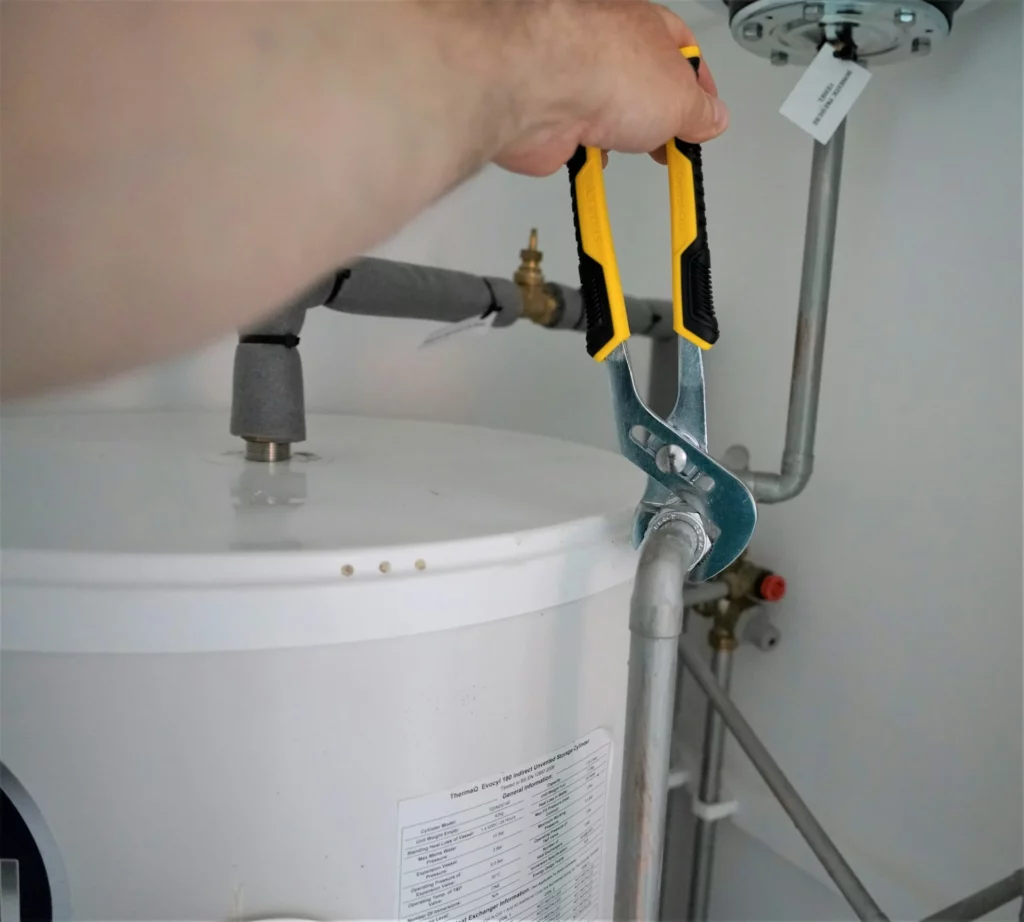
Is a Leaking Water Heater Dangerous?
Yes, a leaking water heater can indeed pose significant dangers, particularly if the leak stems from a pressure build-up issue. Such leaks necessitate urgent attention to mitigate risks like flooding, electrical hazards, or even a potential explosion if gas lines are involved. Determining whether it is that your hot water tank leaking from bottom or any other part can help avoid these serious safety risks.
How Much Does It Cost to Replace a Hot Water Tank?
The hot water tank replacement cost can vary based on several factors including the size and type of the tank, whether you choose a traditional tank-based system or a more modern tankless unit, and the complexity of the installation process.
Generally, replacement costs can range from a few hundred to a couple of thousand dollars. It’s advisable to get multiple quotes and check if you qualify for any rebates that could reduce the overall expense. We offer flexible financing options in the Hamilton and Greater Toronto Area.
What are the Prices for Hot Water Tanks?
Hot water tank prices are influenced by the tank’s capacity, energy efficiency, brand, and whether it’s a conventional tank or a tankless model. Prices can range from as low as $300 for a basic model to over $2,000 for high-efficiency or tankless models. Considering energy efficiency ratings can also affect long-term savings on your energy bills, it’s worth evaluating different models and their specifications.
Contact Dynamic Heating and Cooling for Help
If you’re facing any issues with your HVAC system or notice your hot water heater leaking from bottom, don’t hesitate to contact Dynamic Heating and Cooling. Serving Hamilton and the Greater Toronto Area, our team of licensed technicians is ready to provide fast, reliable service.
Whether you need repairs, replacements, or maintenance, we’re here to ensure your home remains comfortable and safe year-round. Call us today for expert assistance and peace of mind.
